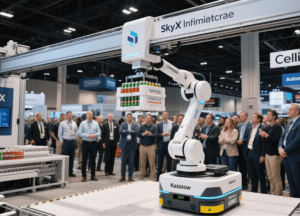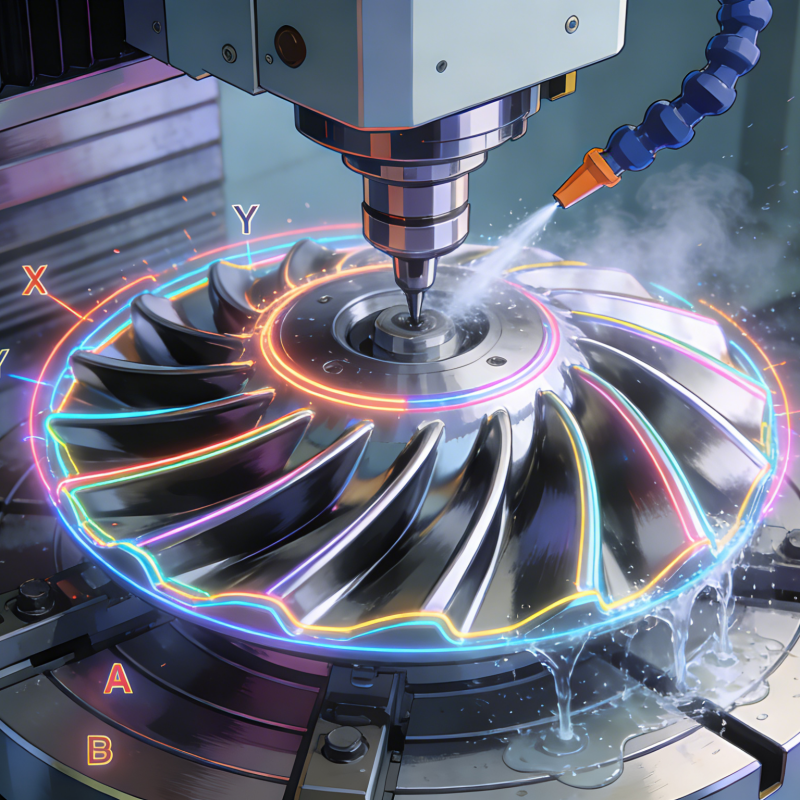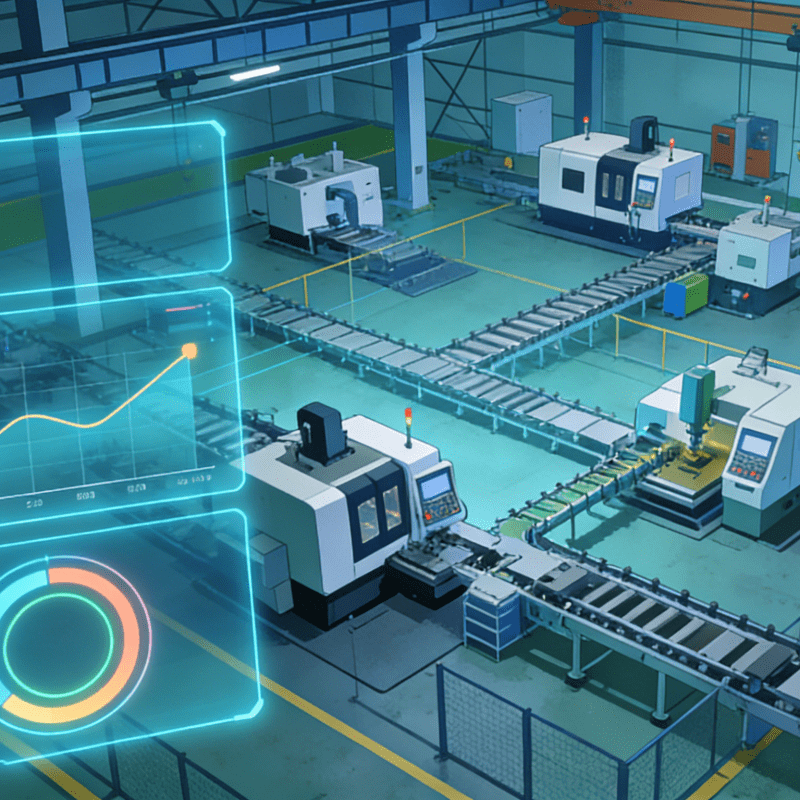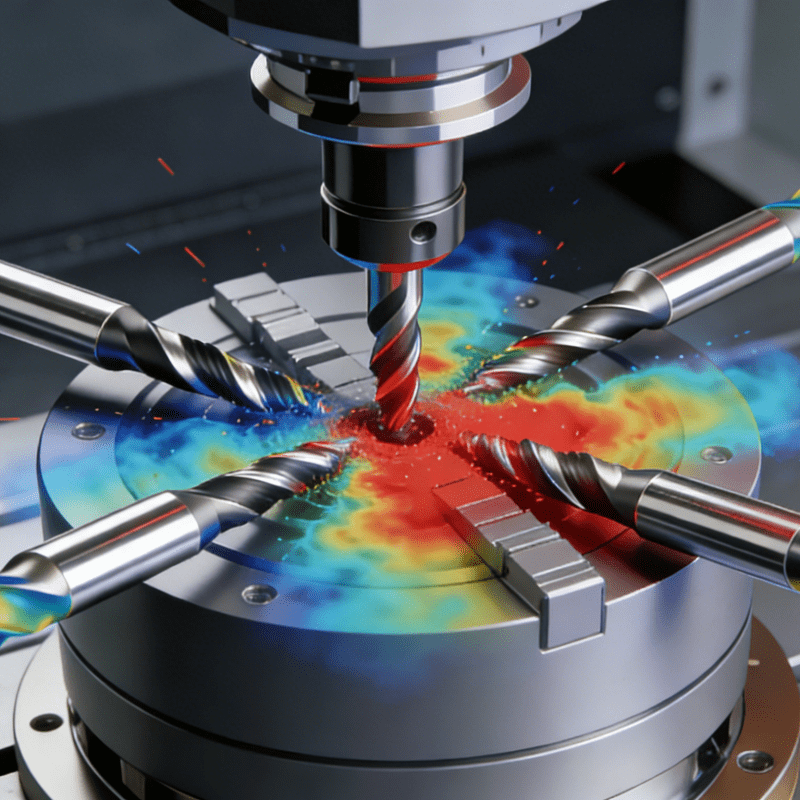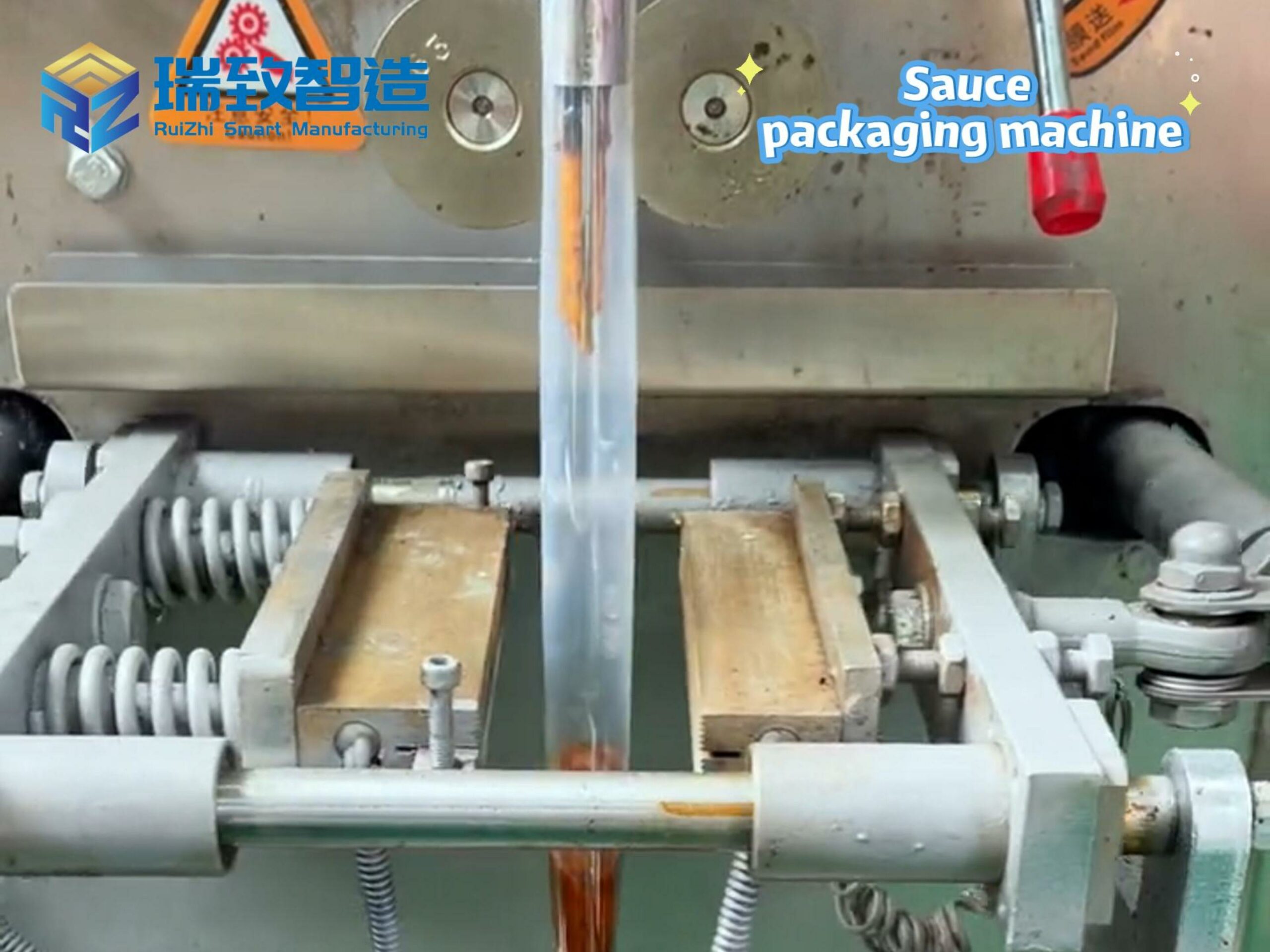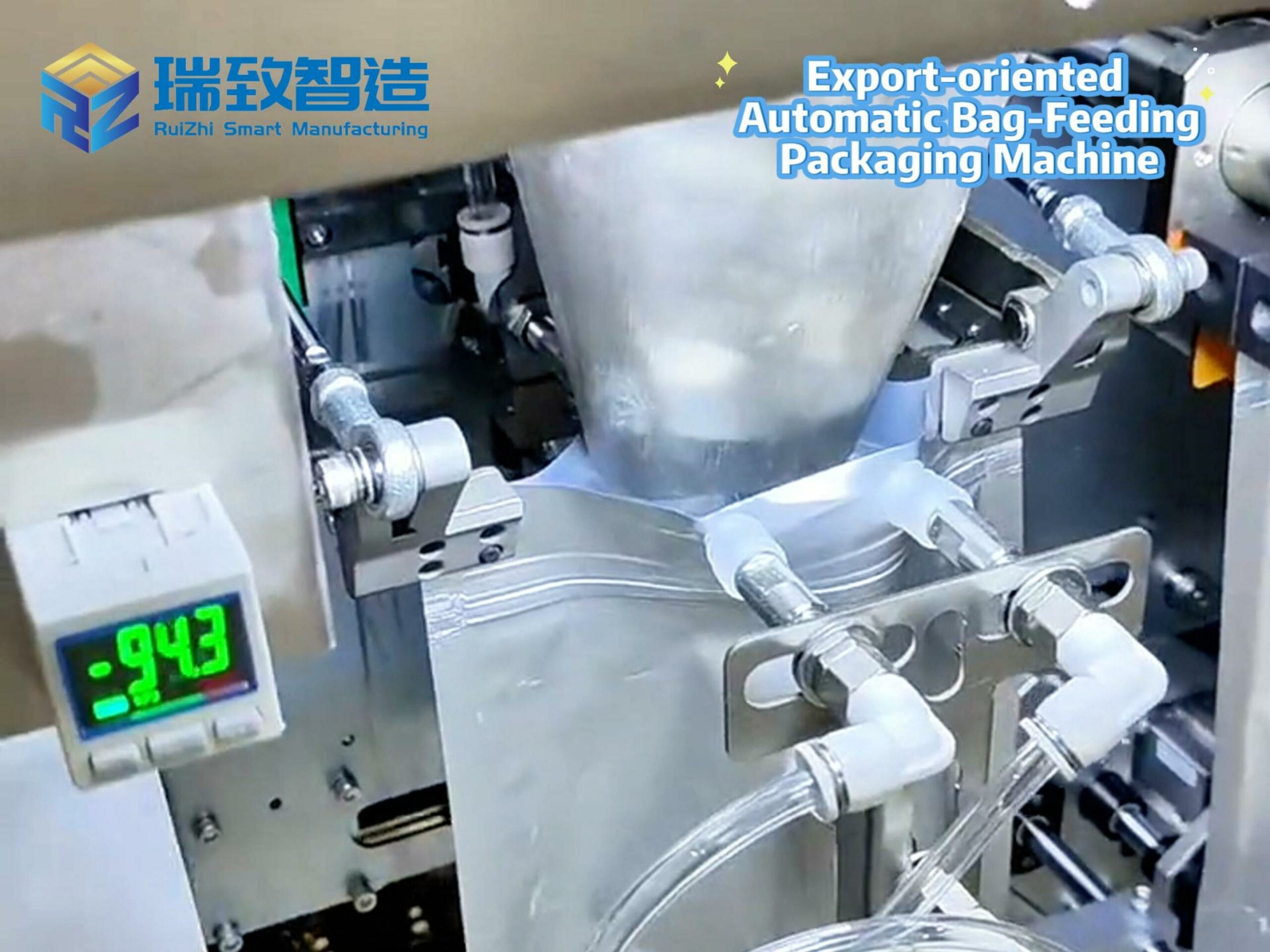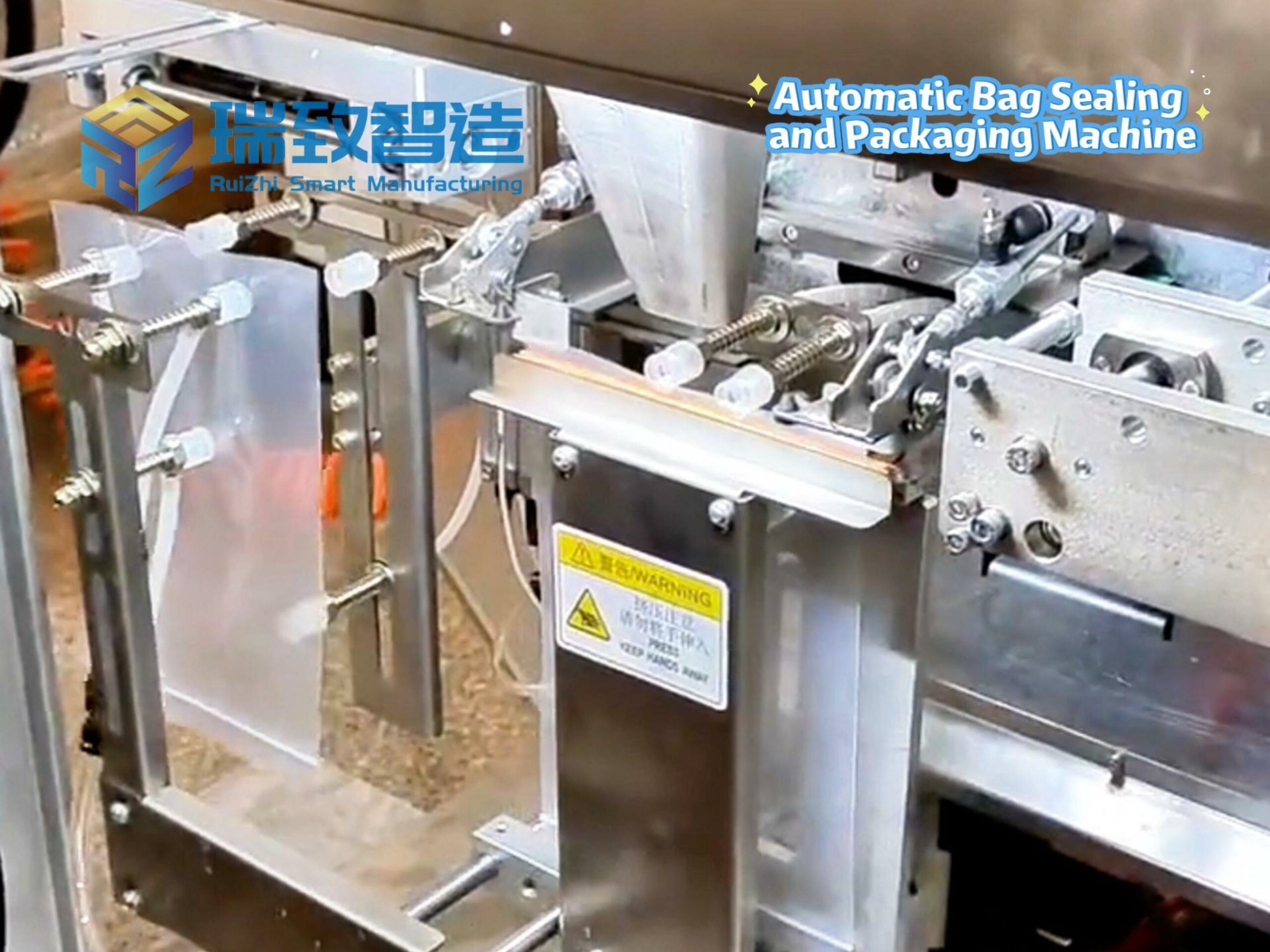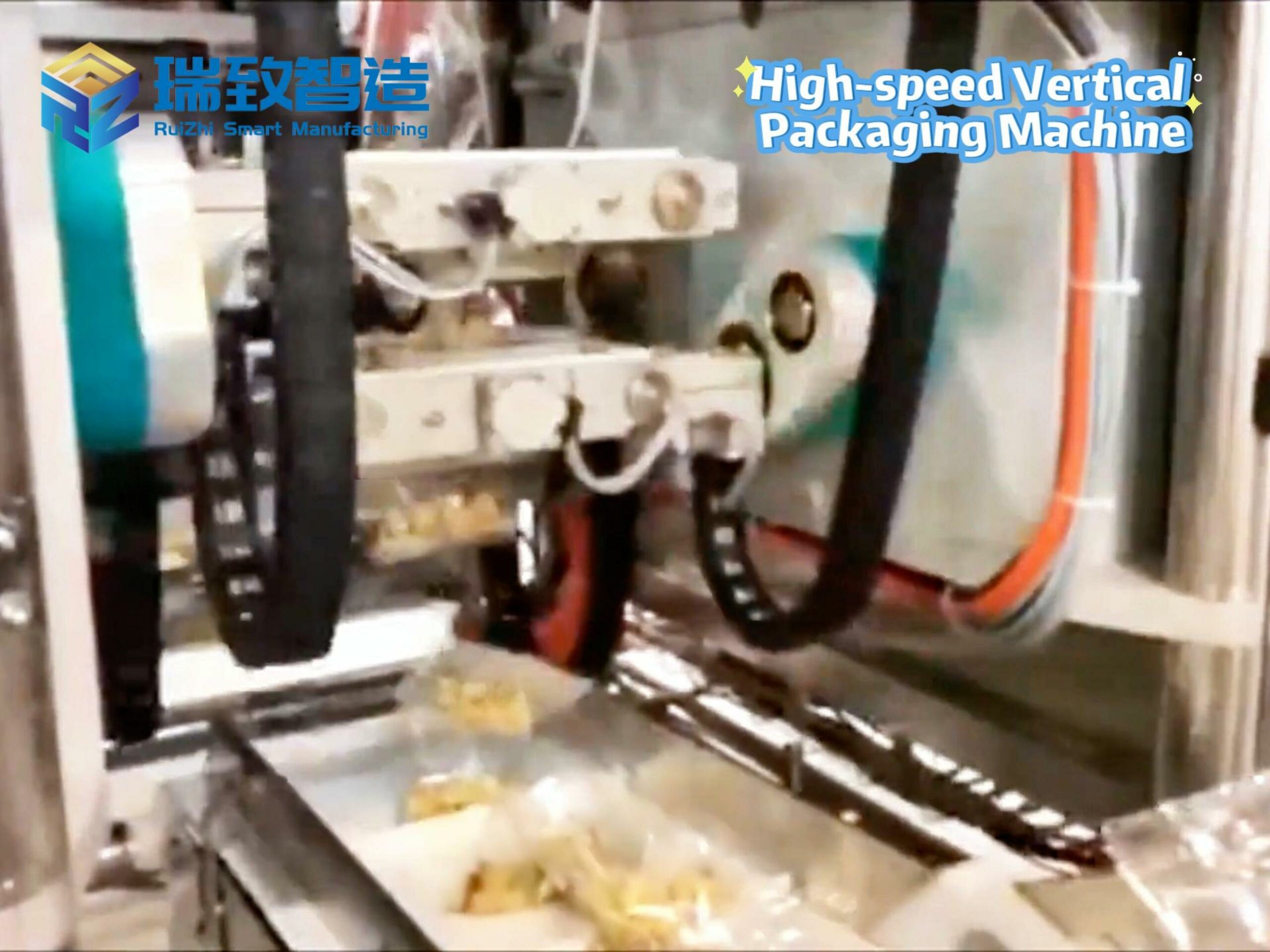Manufacturers worldwide are stuck in a paradox: they need to produce more, but they can’t expand their facilities; they need to speed up operations, but skilled workers are scarce; they need to cut costs, but traditional automation is already maxing out floor space. For years, the answer was to squeeze more out of the factory floor—adding conveyors, AGVs, and robots until every inch was occupied. But today, that approach has hit a wall. The real breakthrough isn’t in expanding outward, but in elevating upward: vertical robotics, which operates from ceilings and overhead spaces, is no longer a futuristic idea. It’s the only viable way to solve the space, labor, and flexibility crises facing modern manufacturing.
Manufacturers around the world are under pressure to do more with less: less space, fewer people and tighter margins. In the US, 75% of manufacturers reported a shortage of skilled workers in 2024, with nearly half citing productivity losses due to resignations and unfilled roles. Deloitte and the Manufacturing Institute project that 1.9 million US manufacturing jobs may remain unfilled by 2033. Globally, labor shortages and demographic shifts are reshaping what’s possible in industrial operations. In response, automation is no longer just a way of increasing productivity. It has become the only viable strategy for maintaining capacity.
Uneven progress in automation
Automation adoption is growing, but not equally. According to the International Federation of Robotics, global robot density doubled in just seven years to reach 162 units per 10,000 employees in 2023. South Korea leads the way with 1,012 robots per 10,000 workers, followed by Singapore (770), China (470) and Germany (429). The US ranks tenth with 295 robots per 10,000 workers, highlighting the urgent need for large-scale modernization.
However, it’s not just about how much automation is being deployed. It’s also about where it’s being deployed. Most automation systems still operate within a single physical layer: the factory floor.
Why floors are reaching their limits
Traditional automation systems, such as AGVs, conveyors and industrial robots, are confined to the floor. In dense facilities, this can create bottlenecks. Adding equipment often means sacrificing walkways, safety zones, or storage. Reconfiguring production lines can be costly and disruptive. Even modest improvements in throughput require increasingly complex workarounds.
The result is that efficiency gains stall while operational friction increases. But what if automation didn’t have to compete for floor space?
Ceiling as the next frontier
Although the ceiling is often structurally capable or can be amended with steel support structures, it is frequently overlooked operationally. Turning it into an automation layer introduces a and additional layer of movement, allowing logistics and material handling to occur above the floor and freeing up space below.
CeiliX ceiling-based systems, such as rail-mounted mobile units, for example, can move in any direction—forward, backward, sideways or diagonally. They can navigate around columns, piping and machinery. In many facilities, this can reclaim 30–50% of previously occupied floor space without the need for new construction. It’s not just about space; it’s also about flexibility: ceiling systems can be modular, reconfigurable and scaled in stages.
This concept is no longer just theoretical. It is already being tested live and in real time.
Proof in practice: Automatica 2025
At the Automate Show in Detroit this year, CeiliX and Kassow Robots (a Bosch Rexroth brand) showcased a vertical automation system in action. A ceiling-mounted autonomous mobile robot (AMR) known as Skybot operated on CeiliX’s InfinityCrane rail, a modular overhead track system designed for multidirectional movement. Skybot autonomously picked up beverage crates from floor-level storage and passed them on to a ground-based AMR from Kassow Robots mid-process.
The two systems operated in close coordination, powered by ctrlX AUTOMATION—an open, vendor-neutral control architecture developed by Bosch Rexroth which enables real-time synchronization between disparate hardware systems, allowing truly flexible, brand-independent automation. This wasn’t just a concept demo—it was a fully functional setup illustrating what happens when automation breaks free of the floor.
Five strategic reasons to automate from above
·Space efficiency: Freeing up floor space enables higher-density layouts and allows for future expansion.
·Improved safety: Reduced ground traffic minimizes collision risks and keeps escape routes clear.
·Operational flexibility: Overhead systems can be scaled up or down and reconfigured without halting production.
·Parallel workflows: Tasks can run simultaneously on multiple levels, including the floor and ceiling.
·Open integration: Platforms like ctrlX support brand-agnostic coordination, reducing system friction.
Taken together, these capabilities represent a shift from linear automation to layered, adaptive systems.
From expansion to elevation
Across North America, Europe and Asia, manufacturers are reaching a common threshold. Physical infrastructure, staffing levels and cost pressures are converging. For sectors such as fast-moving consumer goods (FMCG) warehousing, electronics assembly and contract manufacturing, ceiling-based systems offer a way forward. Growth is no longer measured in additional square metres, but in the smarter use of volume.
Vertical automation is not a futuristic concept. It is a practical solution to the constraints of today.
Getting started
The transition doesn’t require a blank slate. Most manufacturers can start by conducting a floor and ceiling capacity audit, carrying out a pilot deployment and creating a modular rollout plan. When integrated with open control platforms, vertical automation grows step by step, complementing existing ground-level systems without causing disruption.
This isn’t about replacing the floor. It’s about expanding the playing field.
The real shift
In the past, factories automated the ground. The factories of the future will automate everything. The next frontier isn’t what we build, but where we build it.
Vertical robotics isn’t just a new tool for manufacturers—it’s a fundamental reimagining of how industrial space is used. For decades, automation was trapped in a “horizontal mindset,” limited by the length and width of factory floors. Today, as space runs out, labor gaps widen, and flexibility becomes non-negotiable, the answer isn’t to build bigger facilities. It’s to build smarter—upward, outward, and across layers.
The CeiliX and Kassow Robots demo at Automate 2025 wasn’t just a showcase of technology. It was a preview of the future: where ceiling-mounted robots and ground systems work in harmony, where 30–50% of floor space is reclaimed, and where growth isn’t constrained by square footage but enabled by volume. For manufacturers at the threshold of change, vertical automation isn’t an option anymore. It’s the only way to turn constraints into opportunities—one elevated workflow at a time.
How to Improve the Efficiency and Quality of Medical Device Assembly
Is the efficiency of automated medical device assembly high?

